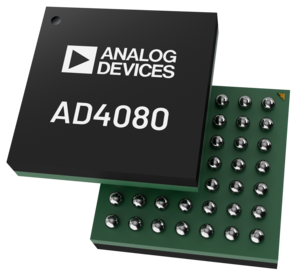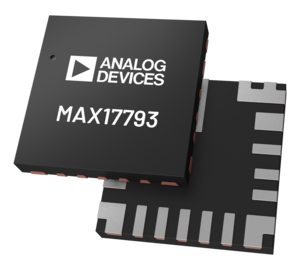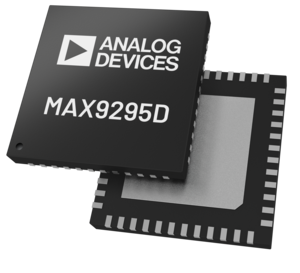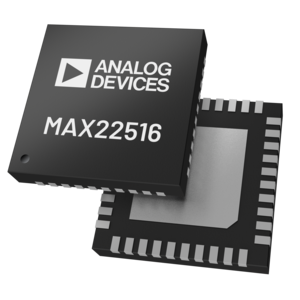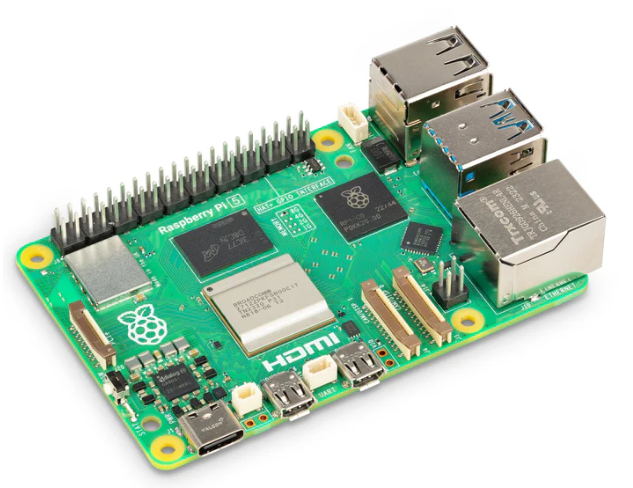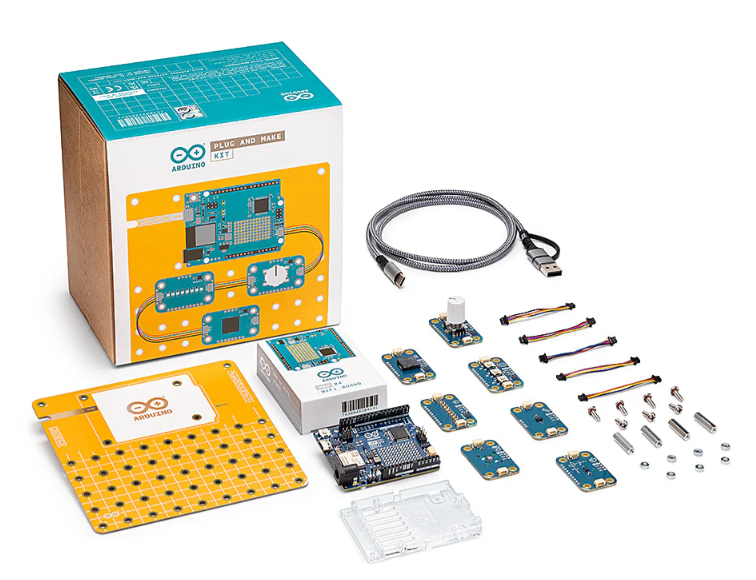Testing extended reality for business and industrial markets
Extended Reality (XR) – a collective term for diverse technologies that include Augmented Reality (AR), Virtual Reality (VR), and Mixed Reality (MR) – has expanded from the gaming world to industrial and business applications. In industry and business, XR can be applied to training, learning, simulation, remote monitoring, maintenance, repair, and more.
This article originally appeared in the August'24 magazine issue of Electronic Specifier Design – see ES's Magazine Archives for more featured publications.
By Tomohide Yamazaki, Assistant Manager, Anritsu
XR is expected to show an annual growth of 20% to 30% through 2028. For example, in its Extended Reality Global Market Report 2023, Global Information, Inc. projects that the XR market will reach an annual growth rate of 29.1% and be worth US$123.77 billion in 2027.
AR overlays video of the real world with computer-generated images and videos. AR typically uses smart glasses or smartphones and does not enable manipulation of the overlaid content, which is static in most cases. A typical AR application is in the maintenance of facilities and equipment. Here, AR allows the operator to view a manual via smart glasses while still being able to work with both hands and not take their eyes off the equipment. The heads-up display (HUD) used in automotive applications is also considered to be a type of AR device.
VR immerses the user in a computer-generated virtual space and requires VR goggles that often block out the real world. Users can interact with characters and objects in this virtual space. An example of the use of this technology is Building Information Modelling (BIM), which uses 3D models in all stages of construction for planning, surveying, design, construction, management, and maintenance.
MR combines the real world with virtual objects, such as menus and characters. It is a user-interactive technology that requires the use of dedicated MR goggles that support gesture recognition, such as virtual touch, on a menu displayed in mid-air. The 3D graphics generated by MR are ideal for providing operators with instructions on a production line or enabling collaboration among project members who need to share information about the shape and design of a product.
To drive training and work efficiency, there is a growing trend to apply MR to manufacturing, maintenance, and repair processes, given that it can provide 3D representations of components and work procedures. It can also be used to include the know-how of experienced workers in a system. Figure 1 summarises the key aspects of these technologies.
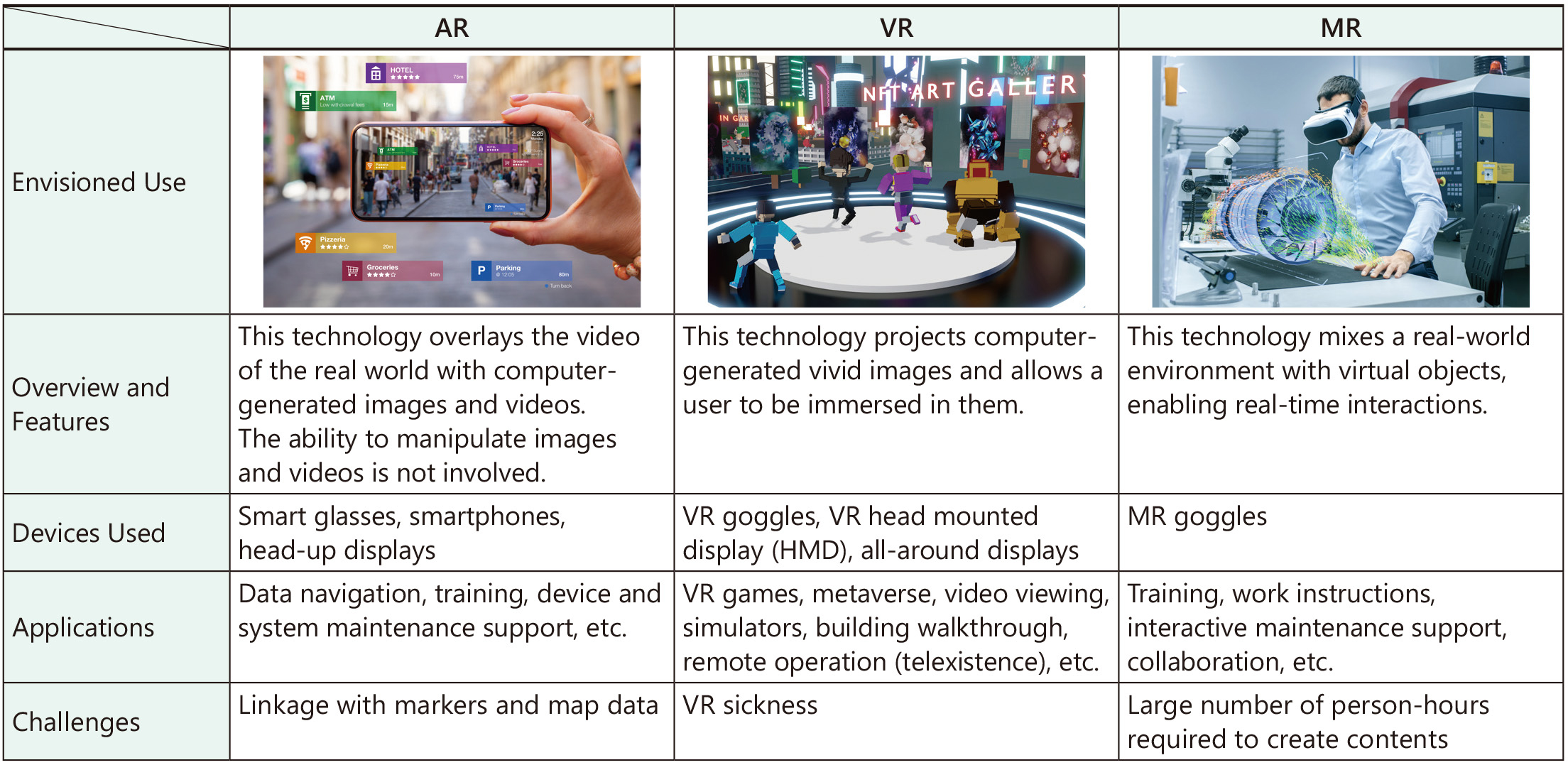
XR Technical challenges
XR devices need to respond to user actions and inputs in real time, including 3D video content, leading to strict latency requirements. One method of suppressing delay involves sending uncompressed video data from the host system and then displaying that video, as is, on the XR device. This, however, means that improving the data throughput of the physical layer of wireless communication is a key challenge to overcome if XR devices are to transmit and receive huge amounts of uncompressed data such as video and 3D graphic content.
For example, the Wi-Fi 5 or IEEE 802.11ac standard specifies a maximum data throughput of 6.9 Gbps, which is barely above the 6 Gbps requirements for stereoscopic XR using uncompressed data. However, newer standards such as Wi-Fi 6/6E (11ax) specify a maximum data throughput of 9.6 Gbps. In addition, Wi-Fi 7 (11be) offers a theoretical maximum throughput of 46 Gbps. However, real-world data throughput speeds are typically much lower than the theoretical maximum possible throughput.
Another challenge is the coexistence of wireless communication technologies and high-density integration in XR devices.
XR devices have multiple wireless communication interfaces, including wireless LAN and Bluetooth, for transferring 3D graphics and motion sensor data. Furthermore, 5G NR technologies with eMBB, mMTC, and URLLC are also under consideration for application to XR. It is said that 5G NR technology will be essential to future XR devices. If these multiple wireless communication technologies are to coexist in a single device, however, XR device developers face the challenge of addressing the noise and radio interference that each of these technologies generate when in use.
XR devices require the high-density integration of multiple wireless communication modules in a limited space. Moreover, noise sources such as power supplies, signal processing, fans, and motors are mounted in a small enclosure close to the communication module. The resulting noise may increase the communication error rate, causing reduced communication speeds and data loss.
Other country- and region-specific radio usage regulations, as well as compliance with all relevant standards, such as 3GPP and IEEE, also need to be considered.
Ensuring wireless communication performance
The wireless performance testing listed below will be vital to developers who take on the technical challenges of wireless communication outlined above.
- Wireless signal strength
- Signal quality such as receiving sensitivity and modulation accuracy
- Stability
For example, the Anritsu Wireless Connectivity Test Set can evaluate the TRx RF characteristics such as Tx power, receiving sensitivity (PER), and modulation accuracy (EVM) for IEEE 802.11a/b/g/n/ac/ax/be (2.4, 5, and 6 GHz bands) devices. The MT8862A supports both Network and Direct modes.
Easy-to-use test environment
Network mode, which is a distinctive feature of the MT8862A, can be used to test the wireless performance indices by directly simulating a real-world network connection and completing the wireless connection between the DUTs and the MT8862A acting as an access point (AP) or station (STA). Network mode provides an easy-to-use test environment that does not require DUT control, and is ideal for product development, design validation, and end-product verification. On the other hand, Direct mode is ideal for prototyping and product development, in that the MT8862A supports fast measurements as the DUT is controlled directly from an external PC and is optimised for mass production.
Bluetooth technology is widely used for communication between XR devices and controllers and must meet the Bluetooth SIG RF performance requirements.
The Anritsu Bluetooth Test Set MT8852B is an industry-standard RF test solution certified by the Bluetooth SIG. The test set provides production tests for a wide range of products that integrate Bluetooth technology. It supports Basic Rate (BR), Enhanced Data Rate (EDR), and Bluetooth low energy (BLE) measurements for transmit power, frequency, modulation, and receiver sensitivity, as required by the Bluetooth RF test specifications.
RF performance in 5G NR can be evaluated using the Radio Communication Test Station MT8000A. The MT8000A test platform provides all-in-one support for RF measurements as well as protocol and application tests in the FR1 (to 7.125 GHz) and FR2 (millimeter-wave) bands. The MT8000A enables both millimeter-wave band RF measurements and beamforming tests using the call connections specified by 3GPP.
Conclusion
XR technology is evolving rapidly as are the wireless technologies on which it will rely. Next-generation XR goggles will require a low-latency performance in the order of a single-digit ms. To achieve this in 5G and beyond networks, the use of multi-access edge computing (MEC) is being considered, where data is processed on edge servers located close to the XR device without the use of the cloud. Wireless performance testing is important to facilitate the development of XR and bring the next generation of devices to the market. To this end, Anritsu offers a comprehensive range of industry-leading test sets that provide engineers with the advanced test capabilities required for current and next-generation wireless technologies. Particularly pertinent to XR is the rollout of Wi-Fi 6/6E and the introduction of Wi-Fi 7. Longer-term advances in 5G and beyond are also expected to greatly enhance communication.

